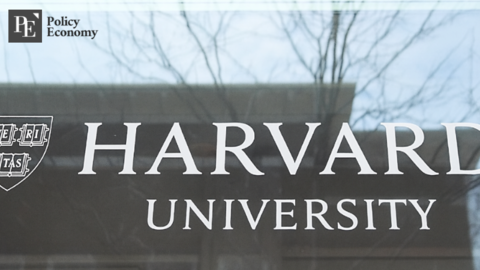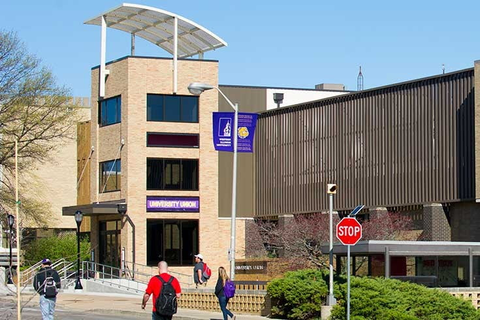Australia's Higher Education Crossroads: The Future of Universities, Funding Reforms, and International Student Shifts
Input
Modified
Strategies for Sustainability: The Future of Australian Universities International Student Trends: A Change in Global Preferences Funding Reforms: Opportunities and Obstacles

Funding Reforms: Opportunities and Obstacles
Australia's higher education sector is undergoing significant changes due to government funding reforms aimed at improving accessibility while universities navigate financial pressures and shifting international student trends, particularly the increasing preference of Chinese students for Australia over the U.S. To ensure long-term sustainability, universities are diversifying revenue streams, strengthening student support services, and collaborating with policymakers to balance funding, research, and enrollment priorities.
The Australian higher education sector is currently in the midst of a transformational period, which has been influenced by the changing international student demographics and the implementation of critical funding reforms. Universities are simultaneously adjusting to a changing global landscape that is redefining their financial stability as the government implements new policies to ensure equitable access to education. International students, particularly those from China, continue to play a critical role; however, in order to preserve their status as global learning centers, institutions must confront novel obstacles. The funding system, the changing dynamics of international student enrollments, and the strategic responses universities must implement to secure a sustainable future are the primary factors that shape Australian higher education today. This article provides a comprehensive examination of these factors.
For decades, Australian universities have utilized a hybrid financing model, which includes revenue from government grants, domestic student fees, and international tuition. The Commonwealth Grant Scheme (CGS) has been instrumental in subsidizing tuition for domestic students, in addition to other financial assistance programs such as the Higher Education Loan Program (HELP). Nevertheless, universities have been compelled to reconsider their strategies as a result of the financial strains imposed by a fluctuating international student market, increasing operational costs, and increased student demand..
In response to these challenges, the Australian government implemented the Managed Growth Funding System, which prioritizes the equitable distribution of financial resources to ensure that disadvantaged Australians have access. Furthermore, the Higher Education Participation and Partnerships Program (HEPPP) is undergoing a reform to emphasize outreach and the development of aspirations for students from underrepresented backgrounds. These initiatives, which are scheduled to be implemented in 2026, are intended to establish a more inclusive educational environment. However, they also raise questions about the sustainability and efficacy of a demand-driven system.
Simultaneously, financial constraints have prompted certain universities to contemplate mergers as a means of survival. Universities are increasingly considering corporate partnerships, industry collaborations, and philanthropic contributions to address the disparity between operational costs and declining government funding. Although these endeavors have the potential to diversify income streams, they also raise concerns regarding the preservation of academic independence and research priorities.
The hard cap on domestic student places is one of the most contentious proposals, as it has the potential to substantially alter the university landscape. Critics contend that restricting the number of available seats could erect obstacles for students who would otherwise be eligible for higher education. Conversely, advocates contend that a more managed system could enhance the allocation of funds, guaranteeing that resources are allocated to pupils who require them the most. The core of the debate continues to be the tension between financial viability and accessibility.

International Student Trends: A Change in Global Preferences
International students are essential to the sustainability of Australian universities, as they not only contribute to the economy but also to the diversity of the campus. Chinese students have historically comprised the largest cohort, comprising approximately 22% of the international student body. Nevertheless, in recent years, there has been a change in their preferences, with a significant number of individuals favoring the United States over Australia and the United Kingdom. This trend is the result of a combination of factors:
Geopolitical tensions: The tumultuous relationship between the United States and China, in addition to visa restrictions and an increasingly unpredictable political climate, has prompted a significant number of Chinese students to pursue alternative options.
Education cost: The United States' increasing tuition fees, particularly in comparison to Australia and the United Kingdom, have rendered these countries more appealing.
The economic downturn in China: The Chinese economy's current state has rendered affordability a critical factor in the decision-making process for students and their families.
Although this transition is advantageous to Australian universities, it also presents novel obstacles. The infrastructure can be strained by a sudden influx of international students, resulting in heightened competition for resources and housing shortages. In addition, universities must guarantee that the student experience remains of the highest quality, particularly in the areas of academic integration, mental health support, and career opportunities for international graduates.
Additionally, the sustainability of universities has been the subject of debate due to their dependence on international tuition fees to finance their operations, which include research. Although international students generate billions for the Australian economy, institutions are susceptible to financial risks due to their excessive dependence on this revenue stream, particularly during global crises such as the COVID-19 pandemic. In the future, universities will be required to maintain a balance between their domestic enrollment priorities and their international student intake, thereby ensuring long-term stability rather than short-term financial gains.

Strategies for Sustainability: The Future of Australian Universities
Several strategic initiatives are being considered to ensure the sustainability of the sector as universities navigate these evolving challenges:
1.) Revenue Diversification
Universities are actively pursuing alternative revenue sources in response to the financial uncertainties associated with both domestic funding reforms and fluctuations in international student enrollment. Alumni fundraising campaigns, industry-led research partnerships, and corporate sponsorships are becoming more significant. Several universities are also investigating commercial ventures, including executive education programs and online learning platforms, as a means of supplementing their traditional revenue streams.
2.) Enhancing Student Support Services and Infrastructure
Universities must allocate resources to enhance academic resources, student services, and accommodation solutions in response to the ongoing increase in international enrollments. This encompasses the improvement of mental health and career services, the expansion of campus facilities, and the provision of sufficient student accommodations. Furthermore, it is imperative to incorporate international students into academic and social communities in order to enhance retention rates and overall satisfaction.
3.) Prioritizing Research and Innovation
Australian universities are renowned for their contributions to global research; however, their leadership in this field is jeopardized by funding constraints. Institutions must increase their investment in research from both the private and public sectors in order to preserve their competitiveness. The key to maintaining research excellence will be to promote technology commercialization and industry collaboration.
4.) Policy Reform Collaboration Between Government and Universities
In order to maintain the resilience of Australia's higher education system, it is imperative that policymakers and universities collaborate to establish sustainable funding models. This encompasses the reevaluation of the feasibility of a demand-driven financing system, the reevaluation of the impact of a hard cap on student places, and the assurance of sufficient research grants. It will be imperative to align university strategies with the national workforce and economic objectives in order to establish a more equitable and future-proof education sector.
Australia's higher education sector is currently at a critical juncture, as it is confronted with both opportunities and challenges that will significantly influence its future. The financial sustainability of universities remains a pressing concern, despite the fact that financing reforms are intended to enhance accessibility and fairness. The changing dynamics of international student enrollments present new opportunities, but they also necessitate meticulous management to prevent an excessive dependence on a single revenue source.
Universities must adjust to this changing environment by prioritizing research excellence, fortifying student support systems, and diversifying their funding sources. Simultaneously, the long-term vision of a flourishing and inclusive higher education sector must be in accordance with government policies. Australia can ensure that universities remain accessible, innovative, and financially robust for generations to come by embracing change and nurturing collaboration, thereby maintaining its position as a global leader in education.





















